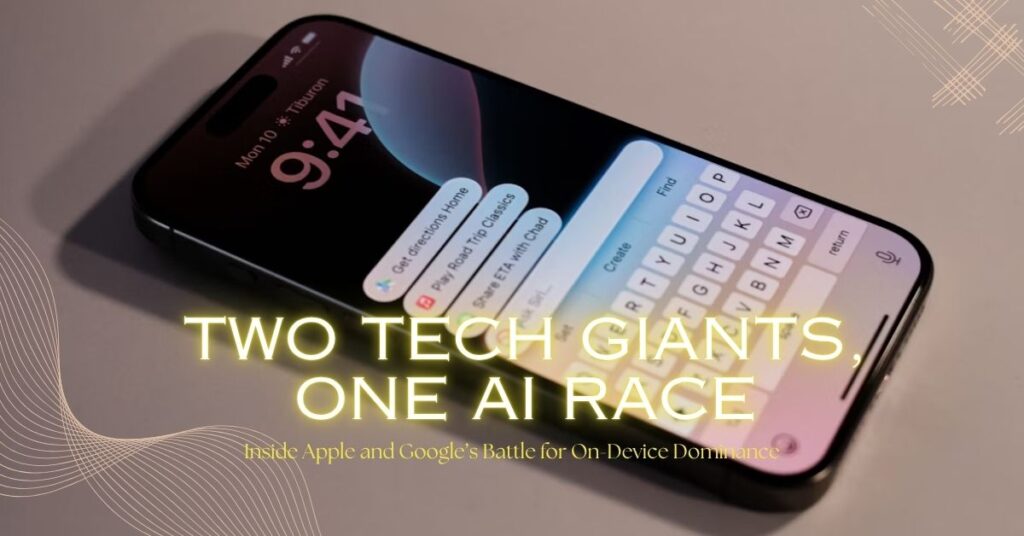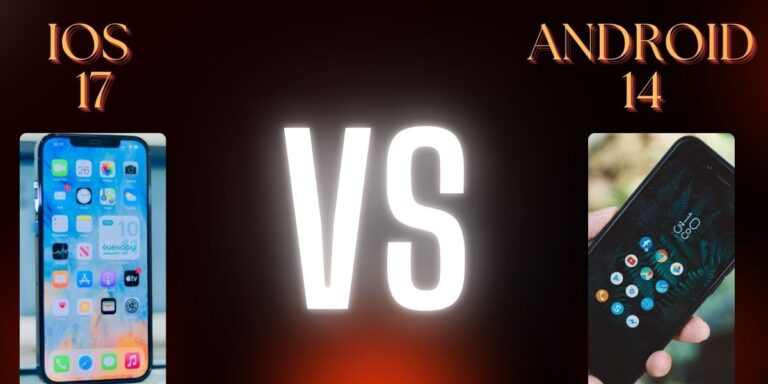The artificial intelligence arms race between Apple and Google has taken a significant turn in 2025, not in the cloud, but directly on your device.
With the recent announcement of Apple Intelligence, unveiled at WWDC on June 9, and the continuing rollout of Google Gemini Nano and Gemini Advanced on Android devices, the landscape of personal AI is evolving rapidly.
This shift marks the beginning of a new era where generative AI becomes a deeply integrated, privacy-first companion within mobile operating systems—without relying solely on cloud infrastructure.
Apple Intelligence: A Private, Contextual AI Framework
Apple’s approach to generative AI is fundamentally centered around privacy and tight integration with its hardware ecosystem. Branded as Apple Intelligence, the company’s on-device AI framework is built on a combination of proprietary language models and tightly curated system-level capabilities.
The features introduced with iOS 19, iPadOS 19, and macOS 15 include:
- Genmoji: AI-generated emojis based on text prompts
- Smart Summaries: Summarize messages, notifications, emails, and documents in a concise format
- Image Playground: A visual generation tool using AI for stickers, illustrations, and animations
- Priority Notifications: Context-aware sorting of alerts
- Writing Tools: System-wide rewriting, proofreading, and summarization of user-generated text
Apple Intelligence is powered by a combination of on-device and Private Cloud Compute processing. While most tasks run locally on A17 Pro and M-series chips, more demanding requests are offloaded to Apple’s own secure cloud infrastructure. Notably, Apple is also opening access to these capabilities for third-party developers, beginning with apps like Notion, Slack, and Microsoft Word.

Google Gemini: Flexibility, Scale, and Cloud-Native Advantage
Google, by contrast, has pursued a more mature and scalable AI integration model through its Gemini ecosystem. This includes:
- Gemini Nano: A lightweight on-device model embedded in Android (available on Pixel 8 Pro and newer)
- Gemini Advanced: A subscription-based, cloud-enhanced AI model with deeper capabilities
- Cross-App Functionality: Seamless integration with Gmail, Docs, Google Messages, Chrome, and Android System UI
- Multimodal Features: AI that understands and generates across text, images, voice, and code
Google’s emphasis lies in broad accessibility and cloud-native flexibility. While some lightweight tasks are handled on-device, the majority of Gemini’s power is delivered through online processing, backed by Google’s vast infrastructure.
Gemini’s strength lies in its interoperability. With Gemini integrated across both consumer and enterprise services, it provides a consistent experience across platforms and use cases—from personal productivity to coding assistance.

Key Differences Between Apple Intelligence and Google Gemini
| Feature | Apple Intelligence | Google Gemini |
|---|---|---|
| Processing Model | On-device + Private Cloud Compute | Primarily cloud-based with some on-device (Nano) |
| Hardware Requirements | A17 Pro and M-series chips only | Available on Pixel 8 Pro+ and select Android phones |
| Privacy Focus | Strong privacy emphasis, no data stored or accessible by Apple | Encrypted cloud; less emphasis on total local processing |
| Features | Genmoji, Smart Summaries, Image Playground, Priority Inbox | Gmail assist, Docs summaries, voice typing, coding help |
| Developer Integration | Opening APIs to third parties in a controlled way | Already integrated with Workspace, Android Studio, etc. |
| Subscription Model | Free with device (for now) | Gemini Advanced is part of Google One AI Premium |
Philosophical Divide: Privacy vs. Performance
At the heart of this competition lies a key philosophical divide. Apple has built its AI around user privacy, local processing, and hardware exclusivity. Google, meanwhile, is betting on the power of scale, AI fluency, and cross-platform adoption, accepting cloud processing as a necessity for more complex tasks.
For developers, this divergence matters. Apple’s approach means tighter platform control and slower third-party rollout. Google’s strategy enables broader experimentation and quicker deployment, but may come with more privacy trade-offs.
Who Has the Advantage in 2025?
As of mid-2025, Google Gemini is clearly more mature and widely available. It has had more time in the market, broader hardware support, and deeper integration with productivity apps.
However, Apple Intelligence introduces a polished, seamless AI layer that feels like a native extension of the operating system. Its commitment to privacy, high design standards, and exclusive on-device processing will appeal strongly to Apple’s user base—particularly professionals and creatives.
The Future of AI Is On-Device
The industry is shifting toward local AI computation—not because the cloud is obsolete, but because real-time responsiveness and data security demand it. Apple and Google are both moving in that direction, albeit with different strategies.
As these technologies evolve, the winner will not be determined by features alone, but by how well each company can deliver useful, ethical, and trustworthy AI experiences at scale.
Final Thoughts
The launch of Apple Intelligence and the expansion of Google Gemini signal the start of a new era in consumer technology. This is not merely a war of software features—it is a redefinition of how users interact with their devices, how data is processed, and where the boundary between user and machine truly lies.
Both platforms have their merits. But one thing is clear: artificial intelligence is no longer something you connect to—it’s something your device will increasingly become.








